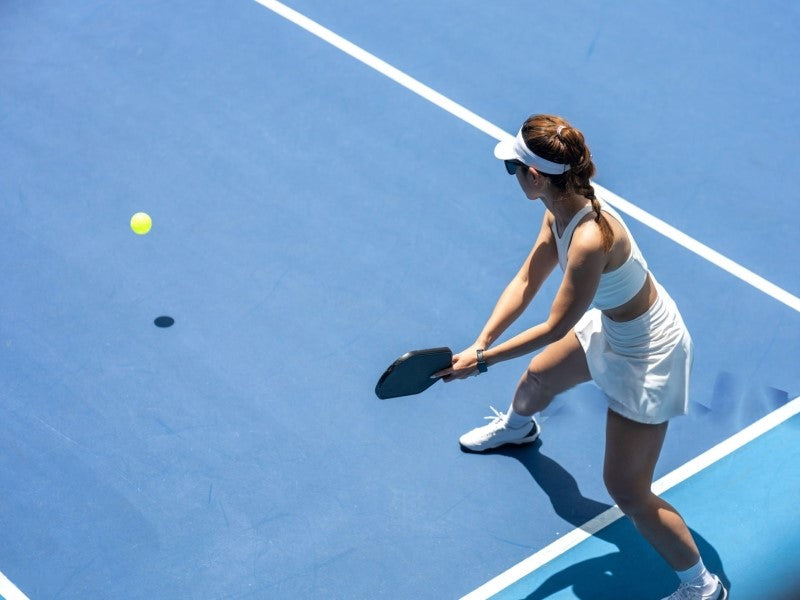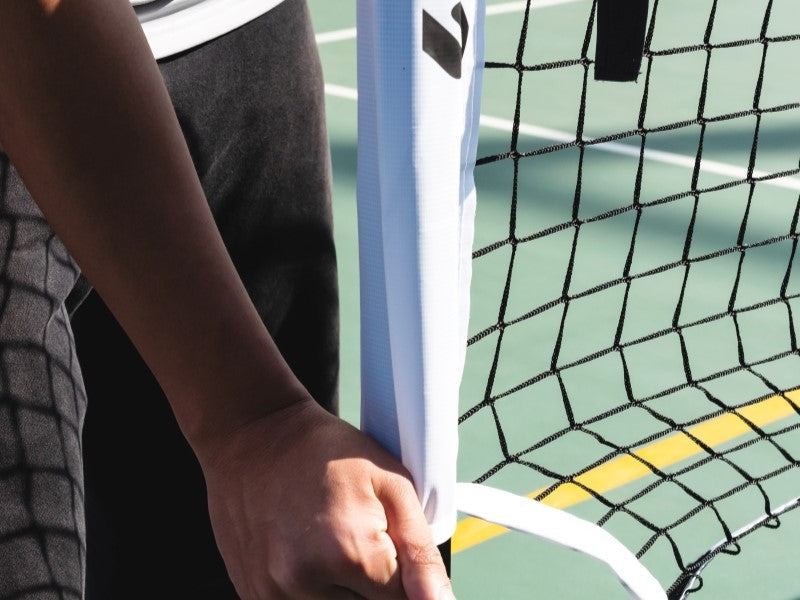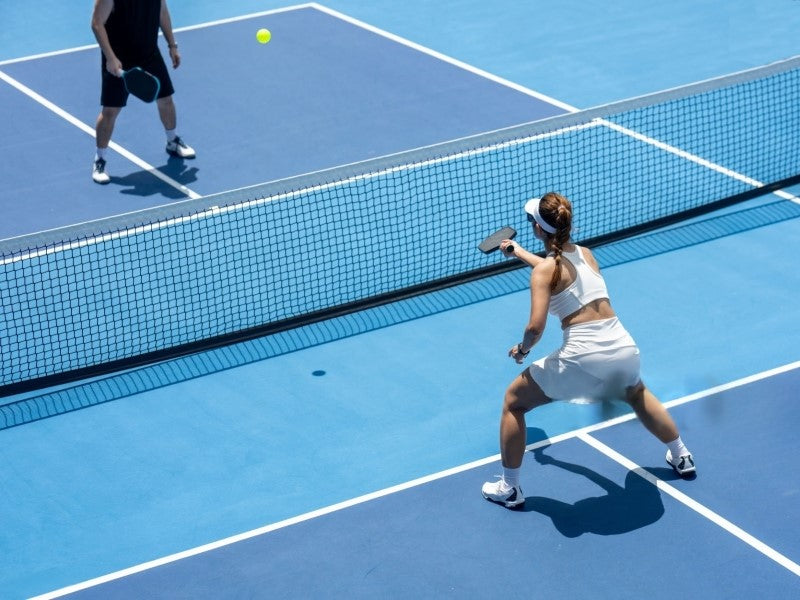Pickleball has exploded in popularity across the United States and around the world in recent years. What was once seen as a casual backyard pastime for retirees has now become a serious competitive sport played by athletes of all ages and skill levels. But some people still ask: “Is pickleball really a sport?” The answer is a resounding yes—and here’s why.
What Defines a Sport?

To determine whether pickleball is truly a sport, let’s look at the standard definition of “sport.” A sport typically includes:
- Physical exertion
- Skill and strategy
- Competition
- Formal rules
- Organized play and leagues
Pickleball meets every single one of these benchmarks.
1. Physical Exertion and Athletic Demand
Despite its reputation as a “low-impact” activity, pickleball can be physically intense. At competitive levels, players engage in fast-paced rallies, explosive footwork, and constant movement. Matches often last 30–60 minutes and require:
- Quick reflexes
- Agility and balance
- Hand-eye coordination
- Cardiovascular endurance
While pickleball is more accessible than some sports like tennis or squash, it still challenges players physically, especially during tournament play.
2. Skill-Based Play and Strategy
Pickleball isn’t just about hitting a ball over the net—it requires precision, timing, and smart shot selection. Players must master:
- Serve placement and spin
- Dinking (soft shots at the net)
- Third-shot drops
- Defensive resets
- Fast reflex volleys
Strategic positioning and mental focus are just as important as physical skill. Doubles play, especially, demands tight coordination and tactical awareness between partners.
3. Competitive Framework and Tournaments
Pickleball has a structured competitive landscape, including:
- Local and national tournaments
- Age and skill-level brackets
- Singles and doubles formats
- Cash-prize events and pro tours
Organizations like USA Pickleball and the Professional Pickleball Association (PPA) oversee official events, ranking systems, and player regulations—further reinforcing the sport’s legitimacy.
4. Official Rules and Governance
Pickleball follows a clearly defined rulebook maintained by USA Pickleball, which governs:
- Scoring systems (traditional or rally scoring)
- Court dimensions and net height
- Paddle specifications
- Service rules and faults
- Non-volley zone (kitchen) guidelines
These rules are enforced at all levels of play, from recreational matches to elite championships, creating consistency and fairness—an essential part of any legitimate sport.

5. Growth of Pickleball as an Organized Sport
Over the last decade, pickleball has seen explosive growth. According to the Sports & Fitness Industry Association (SFIA):
- Over 13.6 million people played pickleball in the U.S. in 2024.
- It’s now the fastest-growing sport in America for three consecutive years.
- Cities across the country are building dedicated courts and facilities.
Pickleball clubs, leagues, coaching programs, and collegiate teams are becoming increasingly common. The sport is being introduced in schools, senior centers, and community parks, ensuring a pipeline of future talent and fans.
6. Recognized by the Sporting Community
Pickleball is now featured in:
- Multi-sport competitions (e.g., National Senior Games, Maccabi Games)
- ESPN and YouTube broadcasts of pro matches
- Endorsements by top athletes from tennis, table tennis, and other racket sports
- Official rankings and sponsorships for pro players
With structured organizations, media coverage, and athlete endorsements, pickleball has earned its place among mainstream sports.
7. Health and Social Benefits of a Legitimate Sport
Beyond competition, pickleball provides all the benefits of a real sport:
- Improved cardiovascular fitness
- Muscle endurance and strength
- Better coordination and reflexes
- Mental health and stress relief
- Community connection and teamwork
These are the same outcomes you'd expect from sports like basketball, soccer, or tennis—further reinforcing pickleball’s classification as a sport, not just a hobby.
8. Future Olympic Aspirations
Pickleball is already being played in over 90 countries and continues to grow internationally. The International Federation of Pickleball (IFP) is actively working toward global recognition, with the goal of:
- Expanding international tournaments
- Establishing national governing bodies
- Advocating for future Olympic inclusion
While it's not yet an Olympic sport, the groundwork is being laid, and its recognition on the world stage is steadily rising.
Here’s What Athletes and Experts Say
Many professional athletes, coaches, and sports scientists now openly recognize pickleball as a serious, skill-based sport. Former tennis pros like Andre Agassi, John McEnroe, and Jack Sock have joined high-level pickleball competitions, praising its speed, strategy, and intensity.
Catherine Parenteau, one of the top-ranked professional pickleball players, notes, “Pickleball requires just as much mental focus and physical agility as any racquet sport I’ve ever played. It’s fast, tactical, and highly competitive.”
Experts in kinesiology and sports medicine have also acknowledged the athletic demands of pickleball. According to Dr. Mark Kovacs, a performance physiologist, “Pickleball combines lateral quickness, balance, and dynamic movement. It's a legitimate way to build both aerobic and anaerobic fitness.”
Additionally, national sports organizations, including USA Pickleball and the Professional Pickleball Association (PPA), have emphasized the sport's structured development pathways and expanding talent pool. Their statements consistently highlight that pickleball is no longer just recreational—it’s a recognized and rapidly professionalizing sport with a global future.
Breaking Down the Facts and Misconceptions
As pickleball continues to grow, so do the myths surrounding it. Many still view the sport as “just for seniors” or a “casual backyard activity,” but these assumptions don’t reflect the reality of today’s competitive pickleball scene.
1. Misconception: “Pickleball is only for older adults.”
Fact: While pickleball gained early popularity among retirees due to its low-impact nature, the sport now attracts players across all age groups. Junior tournaments, college clubs, and pro-level athletes in their 20s and 30s are becoming increasingly common.
2. Misconception: “It’s not physically demanding.”
Fact: High-level pickleball requires explosive lateral movement, split-second reactions, and intense endurance, especially in singles matches. At the pro level, rallies can be just as fast-paced and athletic as tennis or table tennis.
3. Misconception: “It’s just a recreational game, not a real sport.”
Fact: Pickleball has a defined rulebook, governing bodies, organized leagues, international competitions, and even professional tours with rankings and prize money. These are all key features of a legitimate sport.
By separating fact from fiction, it becomes clear that pickleball is not a watered-down pastime—it’s a highly structured, demanding, and growing sport that appeals to both casual and competitive athletes alike.
Whether you’re a beginner looking for a fun way to stay active, or a competitive athlete aiming for a championship, pickleball offers all the elements of a legitimate and fulfilling sport.









Leave a comment
This site is protected by hCaptcha and the hCaptcha Privacy Policy and Terms of Service apply.